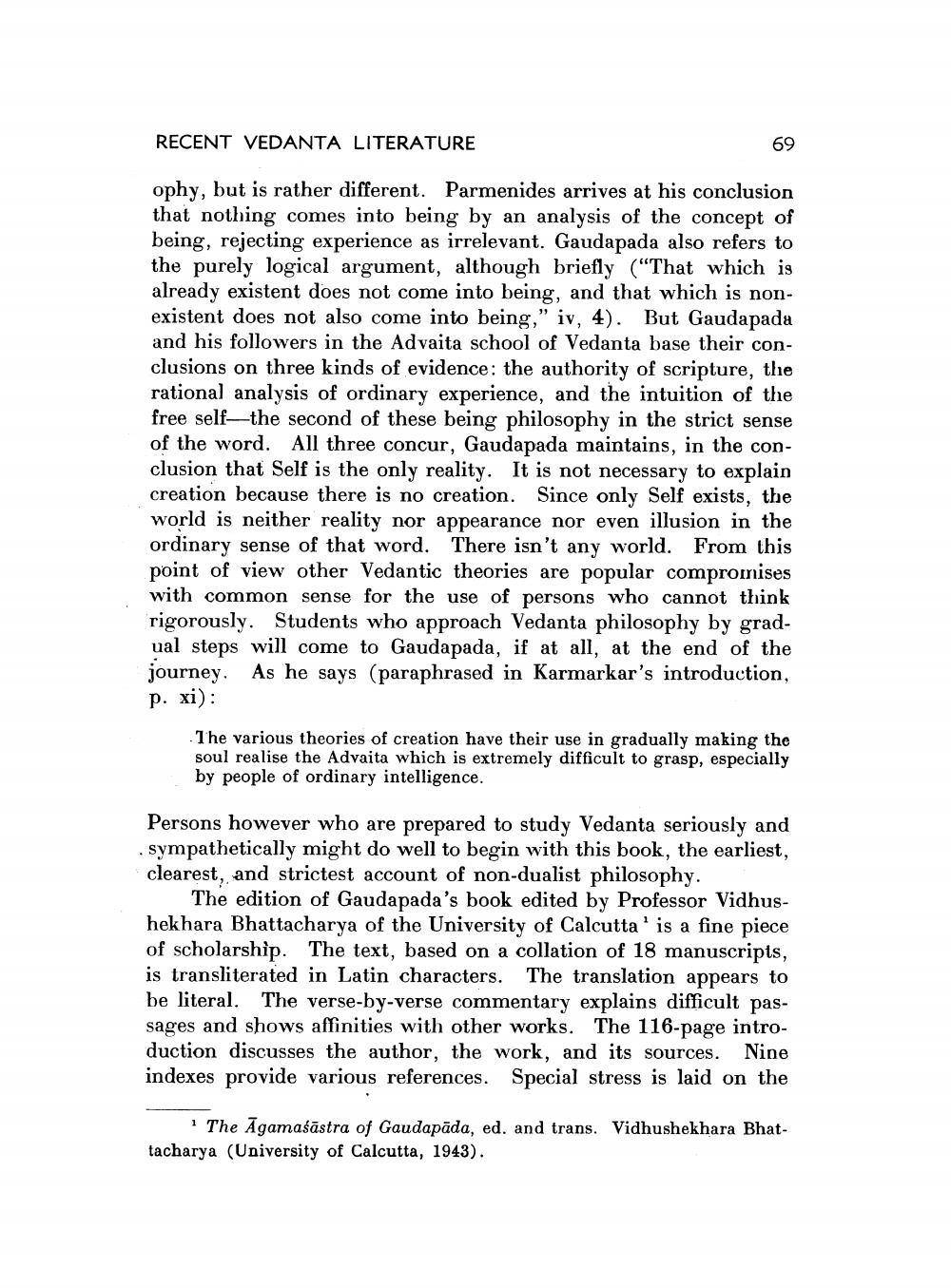Book Title: Recent Vedanta Literature Author(s): George Burch Publisher: George Burch View full book textPage 2
________________ RECENT VEDANTA LITERATURE 69 ophy, but is rather different. Parmenides arrives at his conclusion that nothing comes into being by an analysis of the concept of being, rejecting experience as irrelevant. Gaudapada also refers to the purely logical argument, although briefly ("That which is already existent does not come into being, and that which is nonexistent does not also come into being," iv, 4). But Gaudapada and his followers in the Advaita school of Vedanta base their conclusions on three kinds of evidence: the authority of scripture, the rational analysis of ordinary experience, and the intuition of the free self—the second of these being philosophy in the strict sense of the word. All three concur, Gaudapada maintains, in the conclusion that Self is the only reality. It is not necessary to explain creation because there is no creation. Since only Self exists, the world is neither reality nor appearance nor even illusion in the ordinary sense of that word. There isn't any world. From this point of view other Vedantic theories are popular compromises with common sense for the use of persons who cannot think rigorously. Students who approach Vedanta philosophy by gradual steps will come to Gaudapada, if at all, at the end of the journey. As he says (paraphrased in Karmarkar's introduction, p. xi): The various theories of creation have their use in gradually making the soul realise the Advaita which is extremely difficult to grasp, especially by people of ordinary intelligence. Persons however who are prepared to study Vedanta seriously and sympathetically might do well to begin with this book, the earliest, clearest, and strictest account of non-dualist philosophy. The edition of Gaudapada's book edited by Professor Vidhushekhara Bhattacharya of the University of Calcutta' is a fine piece of scholarship. The text, based on a collation of 18 manuscripts, is transliterated in Latin characters. The translation appears to be literal. The verse-by-verse commentary explains difficult passages and shows affinities with other works. The 116-page introduction discusses the author, the work, and its sources. Nine indexes provide various references. Special stress is laid on the 1 The Agamaśāstra of Gaudapāda, ed. and trans. Vidhushekhara Bhattacharya (University of Calcutta, 1943).Page Navigation
1 2 3 4 5 6 7 8 9 10 11 12 13 14 15 16 17 18 19 20 21 22 ... 29
